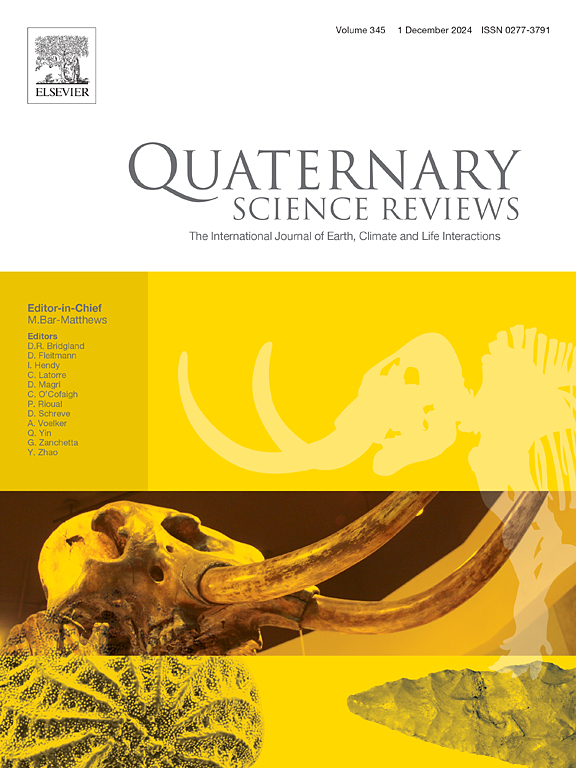High-resolution studies of the Bølling-Allerød to the Younger Dryas transition in the Netherlands: implications for the reconstruction of vegetation changes and the potential role of (perma)frost in contemporary paludification
IF 3.2
1区 地球科学
Q1 GEOGRAPHY, PHYSICAL
引用次数: 0
Abstract
High-resolution studies of botanical microfossils and macroremains were performed on two Lateglacial sites in The Netherlands. Both sites showed a thin Sphagnum layer, formed during the transition from the relatively warm Bølling-Allerød interstadial to the cold Younger Dryas. Dendrochronological analyses revealed that pine trees survived into the Younger Dryas for decades without producing relevant amounts of pollen, demonstrating an asynchronicity between the decline of pine pollen and the actual death of the pine trees. We discuss possible causes for the sudden occurrence of Sphagnum following on the pine forest dieback and conclude that there may be a link with (perma)frost, causing perched water tables and inducing paludification. The formation of Sphagnum peat at the beginning of the Younger Dryas is not necessarily an indicator of wetter climate but could be an indication for a frozen subsoil inducing a (seasonal) perched groundwater table and cryopaludification.
荷兰Bølling-Allerød到新仙女木时期过渡的高分辨率研究:对植被变化重建的意义以及(永久)霜冻在当代白化中的潜在作用
在荷兰的两个冰川遗址进行了植物微化石和大化石的高分辨率研究。这两个地点都有一层薄薄的泥炭层,形成于相对温暖的b ølling- allero ød间冰期到寒冷的新仙女木期的过渡时期。树木年代学分析显示,松树在新仙女木时期存活了几十年,却没有产生相应数量的花粉,这表明了松树花粉的减少和松树的实际死亡之间的不同步。我们讨论了在松林枯枝上突然发生Sphagnum following的可能原因,并得出结论,这可能与(永久)霜冻有关,造成了悬空的地下水位和诱导白化。新仙女木期开始时泥炭泥炭的形成不一定是气候湿润的标志,但可能表明冻结的底土导致了(季节性)地下水位的升高和低温化。
本文章由计算机程序翻译,如有差异,请以英文原文为准。
求助全文
约1分钟内获得全文
求助全文
来源期刊

Quaternary Science Reviews
地学-地球科学综合
CiteScore
7.50
自引率
15.00%
发文量
388
审稿时长
3 months
期刊介绍:
Quaternary Science Reviews caters for all aspects of Quaternary science, and includes, for example, geology, geomorphology, geography, archaeology, soil science, palaeobotany, palaeontology, palaeoclimatology and the full range of applicable dating methods. The dividing line between what constitutes the review paper and one which contains new original data is not easy to establish, so QSR also publishes papers with new data especially if these perform a review function. All the Quaternary sciences are changing rapidly and subject to re-evaluation as the pace of discovery quickens; thus the diverse but comprehensive role of Quaternary Science Reviews keeps readers abreast of the wider issues relating to new developments in the field.
 求助内容:
求助内容: 应助结果提醒方式:
应助结果提醒方式:


